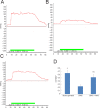Neural-like cells from adipose-derived stem cells for cavernous nerve injury in rats
- PMID: 30762023
- PMCID: PMC6404503
- DOI: 10.4103/1673-5374.250630
Neural-like cells from adipose-derived stem cells for cavernous nerve injury in rats
Abstract
Although the remaining nerve tissue can regenerate and partly restore erectile function when the cavernous nerve is compressed/severed and function lost, the limited regenerative ability of these nerve tissues often fails to meet clinical needs. Adipose-derived stem cells are easy to obtain and culture, and can differentiate into neural cells. Their proliferation rate is easy to control and they may be used to help restore injured cavernous nerve function. Sprague-Dawley male rats (n = 45) were equally randomized into three groups: fifteen rats as a sham-operated group, fifteen rats as a bilateral nerve crush (BINC) group (with no further intervention), fifteen rats as a BINC with intracavernous injection of one million neural-like cells from adipose-derived stem cells (NAS) (BINC + NAS) group. After 4 weeks, erectile function was assessed by stimulating the cavernous body. The number of myelinated axons in the dorsal cavernous nerve was determined by toluidine blue staining. The area of neuronal nitric oxide synthase-positive fibers in the dorsal penile nerve was measured by immunohistochemical staining. Masson staining was used to analyze the ratio of smooth muscle to collagen in penile tissue. The results demonstrate that maximal intracavernous pressure, the ratio of maximal intracavernous pressure to mean arterial pressure, the numbers of myelinated axons and neuronal nitric oxide synthase-positive fibers in the dorsal penile nerve, and the ratio of smooth muscle to collagen could be increased after cell transplantation. These findings indicate that neural-like cells from adipose-derived stem cells can effectively alleviate cavernous nerve injury and improve erectile function. All animal experiments were approved by the Animal Ethics Committee of Huazhong University of Science and Technology, China (approval No. 2017-1925) on September 15, 2017.
Keywords: adipose-derived neural stem cells; cavernous nerve; cell differentiation; corpus cavernosum; erectile dysfunction; nerve regeneration; neural regeneration; neurons; radical prostatectomy.
Conflict of interest statement
None
Figures





Similar articles
-
Is there a role for stem cell therapy in erectile dysfunction secondary to cavernous nerve injury? Network meta-analysis from animal studies and human trials.Ther Adv Urol. 2022 Mar 29;14:17562872221086999. doi: 10.1177/17562872221086999. eCollection 2022 Jan-Dec. Ther Adv Urol. 2022. PMID: 35371295 Free PMC article. Review.
-
Effects of intracavernous injection of adipose-derived stem cells on cavernous nerve regeneration in a rat model.Cell Mol Neurobiol. 2013 Mar;33(2):233-40. doi: 10.1007/s10571-012-9890-7. Epub 2012 Nov 17. Cell Mol Neurobiol. 2013. PMID: 23161147 Free PMC article.
-
Adipose-derived stem cells modified by BDNF gene rescue erectile dysfunction after cavernous nerve injury.Neural Regen Res. 2020 Jan;15(1):120-127. doi: 10.4103/1673-5374.264464. Neural Regen Res. 2020. PMID: 31535660 Free PMC article.
-
Nanoparticle Improved Stem Cell Therapy for Erectile Dysfunction in a Rat Model of Cavernous Nerve Injury.J Urol. 2016 Mar;195(3):788-95. doi: 10.1016/j.juro.2015.10.129. Epub 2015 Oct 28. J Urol. 2016. PMID: 26519654
-
Adipose Tissue-Derived Stem Cell Therapy for Cavernous Nerve Injury-Induced Erectile Dysfunction in the Rat Model: A Systematic Review and Meta-Analysis Using Methodological Quality Assessment.Int J Stem Cells. 2019 Jul 31;12(2):206-217. doi: 10.15283/ijsc18122. Int J Stem Cells. 2019. PMID: 31022999 Free PMC article. Review.
Cited by
-
Whole-transcriptome analysis of rat cavernosum and identification of circRNA-miRNA-mRNA networks to investigate nerve injury erectile dysfunction pathogenesis.Bioengineered. 2021 Dec;12(1):6516-6528. doi: 10.1080/21655979.2021.1973863. Bioengineered. 2021. PMID: 34461805 Free PMC article.
-
Established Immortalized Cavernous Endothelial Cells Improve Erectile Dysfunction in Rats with Cavernous Nerve Injury.Pharmaceuticals (Basel). 2023 Jan 13;16(1):123. doi: 10.3390/ph16010123. Pharmaceuticals (Basel). 2023. PMID: 36678621 Free PMC article.
-
Is there a role for stem cell therapy in erectile dysfunction secondary to cavernous nerve injury? Network meta-analysis from animal studies and human trials.Ther Adv Urol. 2022 Mar 29;14:17562872221086999. doi: 10.1177/17562872221086999. eCollection 2022 Jan-Dec. Ther Adv Urol. 2022. PMID: 35371295 Free PMC article. Review.
-
An update on the use of stem cell therapy for erectile dysfunction.Asian J Urol. 2024 Oct;11(4):530-544. doi: 10.1016/j.ajur.2023.07.005. Epub 2024 Mar 11. Asian J Urol. 2024. PMID: 39534008 Free PMC article. Review.
-
Therapies Based on Adipose-Derived Stem Cells for Lower Urinary Tract Dysfunction: A Narrative Review.Pharmaceutics. 2022 Oct 19;14(10):2229. doi: 10.3390/pharmaceutics14102229. Pharmaceutics. 2022. PMID: 36297664 Free PMC article. Review.
References
-
- An C, Cheng Y, Yuan Q, Li J. IGF-1 and BMP-2 induces differentiation of adipose-derived mesenchymal stem cells into chondrocytes-like cells. Ann Biomed Eng. 2010;38:1647–1654. - PubMed
-
- Bochinski D, Lin GT, Nunes L, Carrion R, Rahman N, Lin CS, Lue TF. The effect of neural embryonic stem cell therapy in a rat model of cavernosal nerve injury. BJU Int. 2004;94:904–909. - PubMed
-
- Burnett AL, Musicki B. The nitric oxide signaling pathway in the penis. Curr Pharm Des. 2005;11:3987–3994. - PubMed
-
- Carrier S, Zvara P, Nunes L, Kour NW, Rehman J, Lue TF. Regeneration of nitric oxide synthase-containing nerves after cavernous nerve neurotomy in the rat. J Urol. 1995;153:1722–1727. - PubMed
LinkOut - more resources
Full Text Sources

